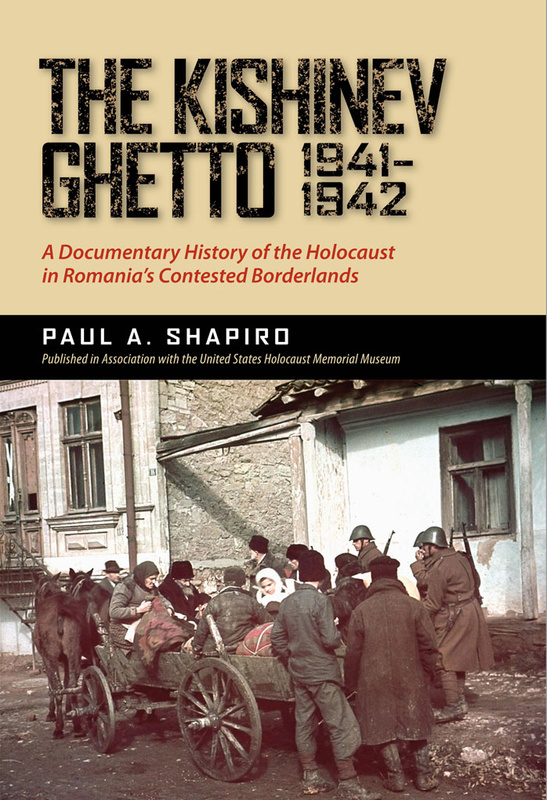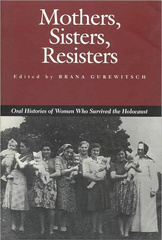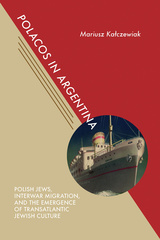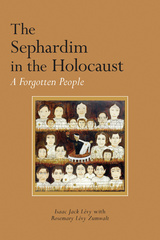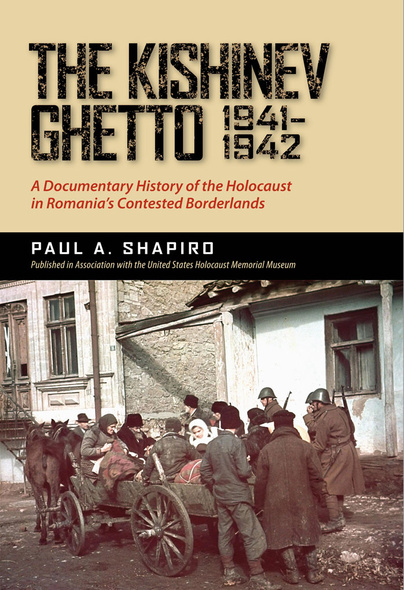
The Kishinev Ghetto, 1941–1942
A Documentary History of the Holocaust in Romania's Contested Borderlands
The Kishinev Ghetto, 1941–1942 sheds new light on the little-known historical events surrounding the creation, administration, and liquidation of the Kishinev (Chisinau) ghetto during the first months following the Axis attack on the Soviet Union (Operation Barbarossa) in late June 1941. Mass killings during the combined Romanian-German drive toward Kishinev in Bessarabia, after a year of Soviet rule in this Romanian border province, were followed by the shooting of thousands of Jews on the streets of the city during the first days of reestablished Romanian administration. Survivors were driven into a ghetto, persecuted, and liquidated by year’s end. The Kishinev Ghetto, 1941–1942 is the first major study of these events.
Often overshadowed by events in Germany and Poland, the history of the Holocaust in Romania, including what took place in Bessarabia (corresponding in large part with the territory of the modern Republic of Moldova), was obscured during decades of communist rule by denial and by policies that blocked access to wartime documentation. This book is the result of a lengthy research project that began with Paul A. Shapiro’s missions to Romania for the United States Holocaust Memorial Museum to negotiate access to these documents.
The volume includes:
· A preface describing the origin of the project in the immediate aftermath of the Ceausescu regime in Romania.
· A hundred-page study setting the events of the book within the historical context of Eastern European antisemitism, Romanian-Soviet conflict over control of Bessarabia, and Romania’s alliance with Nazi Germany.
· A thoughtfully curated collection of archival documents linked to the study.
· A chronology of related historical events.
· Twenty-one black and white photographs and a map of the ghetto.
Students and scholars of Holocaust history, Judaic studies, twentieth-century Eastern European history, Romania, Moldova, and historical Bessarabia will want to own this important, revealing volume.
Published in association with the United States Holocaust Memorial Museum
While the story of Nazi-established ghettos during World War II in Poland and elsewhere has largely been researched and told, this is the first time attention is directed to the short lived (July 1941–March 1942) saga of the Chisinãu (Kishinev) Ghetto.'
—Slavic Review
'Shapiro offers this volume as a 'memorial to the Jews of Chisinau . . . who perished in the city, or who suffered ghettoization and deportation to Transnistria, and to the survivors, who were forever changed.'' A very important contribution to the scholarship on Romania's Holocaust.'
—Holocaust and Genocide Studies
'With the completion of each micro-study such as this outstanding one on the Kishinev ghetto we get closer to answering the questions: how could the Holocaust happen, and why? Paul Shapiro has mined a very important, rare collection of materials that reveal the coordination of Romanian regional and national leaders and the actions of local antisemites in perpetrating the mass expropriation and murder of the once-sizable Jewish community of this Bessarabian capital city. The detailed study by Shapiro is thoughtful, informative and moving, providing the necessary historical explanation for understanding the document collection that follows. Scholars, students and general readers will be surprised to discover in these sources, which were acquired by the U.S. Holocaust Memorial Museum thanks to Shapiro’s determined negotiations, that in 1941-42 the Romanian attack against Jews was just as systematic, thorough, and brutal as the German assault. This book stands as a powerful statement against Romanian Holocaust denial, and a monument to this lost Jewish community.'
—Wendy Lower, author of Hitler’s Furies
This is an important account of the history of the Kishinev Ghetto and the Holocaust in Romania. Though many aspects of the Holocaust have been studied in depth, what happened in Romania still remains to be fully understood. This book with its significant primary sources and lucid historical account not only helps fill that lacuna, but it also documents the obstructions contemporary post-communist Romanian authorities placed in the path of researchers anxious to study that history. This book is about history and the denial of that history. It is an important addition to the corpus of Holocaust history and historiography.’
—Deborah E. Lipstadt, author of Denying the Holocaust and The Eichmann Trial
The Kishinev Ghetto indeed makes an original and significant contribution to the field of Holocaust literature, and in particular on the Holocaust in Romania and the city of Kishinev. It offers the successful combination of dry official documents with the emotional context and setting. As such, it will be of interest and assistance to a broad audience, both the general public and future researchers in the field.’
—Samuel Aroni, author of Memories of the Holocaust: Kishinev (Chisinau) 1941–1944
‘This tragic and appalling story emerges well from this volume. It is a most important contribution to a little-known aspect of the genocide of the Jewish people during the Second World War and will become the standard work on the subject, illustrating clearly the whole character of the Romanian genocide.’
—Antony Polonsky, author of Politics in Independent Poland, 1921-1939: The Crisis of Constitutional Government, and The Little Dictators: The History of Eastern Europe since 1918
Preface
Note on the Citation and Translation of the Documents
The Chisinau (Kishinev) Ghetto, 1941–1942: Creation, Administration, Liquidation
Paul A. Shapiro
Prologue: Documenting the Tragedy
Chisinau Reoccupied
“Curatirea Terenului”: Cleansing the Terrain
Chisinau Ghetto: Creation and Administration
Population of the Ghetto
The Massacres of Visterniceni and Ghidighici
Control of Ghetto Access and Egress
Escapes
Forced Labor
Deportation Orders
Final Preparations, Final Appeals
Liquidation of the Chisinau Ghetto
The Final Extortion: Corruption from the Top Down
The Aftermath
"Organized Plunder": Theft of Jewish Property and State Confiscations
Cleaning Up: Final Acts and Final Inhumanities, 1942
The End: Transnistria
Notes
Chronology of the Chisinau Ghetto and the Romanian Occupation of Bessarabia, 1941–1942
Brewster Chamberlin and Radu Ioanid
The Documents
Index

